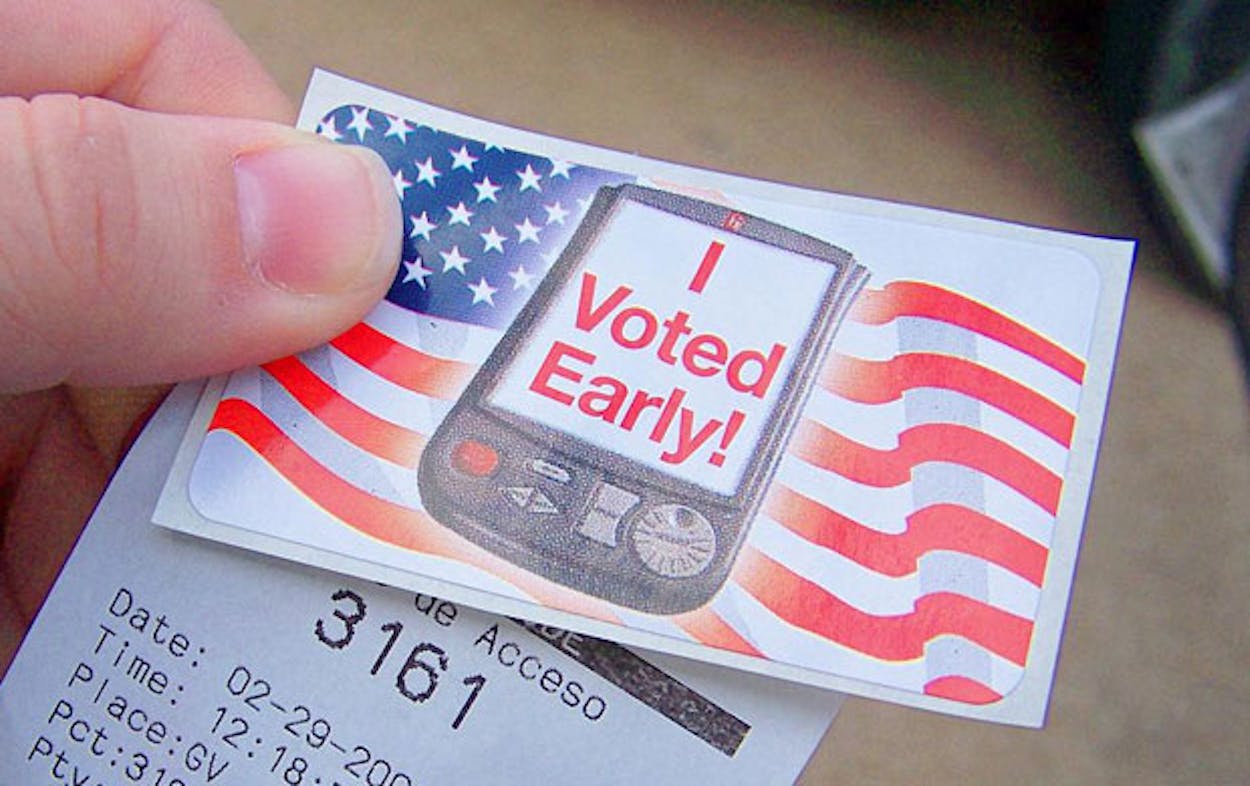More than one million people voted in May’s primary election, and that number is supposed to plummet for the July 31 runoff, which is headlined by the Republican contest between Lieutenant Governor David Dewhurst and Tea Party favorite Ted Cruz for the U.S. Senate. But, so far at least, early voting turnout has been higher than expected.
As Robert T. Garrett of the Dallas Morning News wrote of the data for the top ten counties in the state (which can be seen on the Secretary of State’s website):
Two days of early voting for Tuesday’s GOP runoff election in urban counties of Texas has yielded more than twice as many votes as it did last spring.
The runoff’s early-vote period, which ends Friday, is just five days — less than half the length of the May 14-May 25 early voting window that preceded the May 29 primary. So to get an early vote equal to that cast in the primary, you have to have participation that’s more than twice as heavy.
But many have predicted a steep drop-off in voter participation in the runoff. So far, that’s not borne out.
Garrett goes on to report that there were 31,622 and 36,255 votes cast this past Monday and Tuesday, compared to 15,228 and 15,301 votes cast on the first two days of May early voting.
As Garrett also noted, “the conventional wisdom is that higher turnout helps Dewhurst because it ‘dilutes the tea’ with voters who tilt more to the Texas conservative business establishment.”
In fact, TEXAS MONTHLY’s Paul Burka has predicted that a turnout of fewer than 825,000 voters means a win for Cruz, while a higher number favors Dewhurst.
In San Antonio, John Gonzalez of the Express-News describes a “steady stream” of voters which Elections Administrator Jacque Callanen called “truly amazing.” His colleague Nolan Hicks further reported that:
Election officials expected about 1500 people to vote on Monday: 4705 people voted in the GOP runoff and another 1787 people voted in the Democratic runoff. Tuesday proved another massive surprise as instead 7607 people cast ballots. Election officials were expecting only about 1900.
As University of Texas professor James Henson noted on Twitter, Bexar County’s enthusiasm is likely due to the “double whammy” of the U.S. Senate race and the state Senate battle between longtime incumbent Jeff Wentworth and surprise challenger Donna Campbell.
In Austin, Richard Whittaker of the Austin Chronicle said participation was “on the brisk side of terrible, with turnout inching its way to 1.39% of registered voters in Travis County.” However, that was still more than the first-day vote in May.
Numbers were also high in Houston, if, unsurprisingly, 77 percent Republican. While Rs across the state can also vote in two Railroad Commission and one Supreme Court race (as well as various legislative runoffs), many Ds in Texas get a ballot that has nothing more than this:

But what does it all mean? Nobody can really say for sure. UT’s Henson thinks that the total number will end up between 800,000 and 900,000 (though unlike Burka, he still calls it for Cruz).
“There is still no good model for predicting turnout in more than a guessing way,” Henson told the TM Daily Post. “More early voting numbers will help, but not that much.”
If you’re a fan of graphs, however, Mark P. Jones of Rice University has taken a shot at a formula which will attempt to compare May’s twelve-day early voting to current five-day tally. It weighs each day of the current runoff as equal to 2.4 days of the vote in May. That puts the overall pace of the week so far in a somewhat different light.
Jones told Benjamin Wermund of the Austin American-Statesman that turnout would “be closer to a million than 600,000 — or the higher range of initial projections.”
Early voting ends on Friday, with Election Day next Tuesday.







